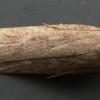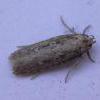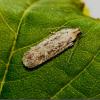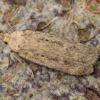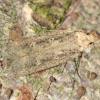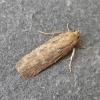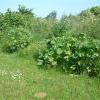35.033 Platyedra subcinerea (Haworth, 1828)
Status and Distribution
Local to very local, in south and east England and the Channel Islands, absent from Scotland, Wales and Ireland and may be declining in parts of its range. There are a few scattered sites where it has been recorded regularly in good numbers, such as in south Hampshire, but on Guernsey (Channel Islands) over 100 per night were noted on some occasions during 2000 and 2001.
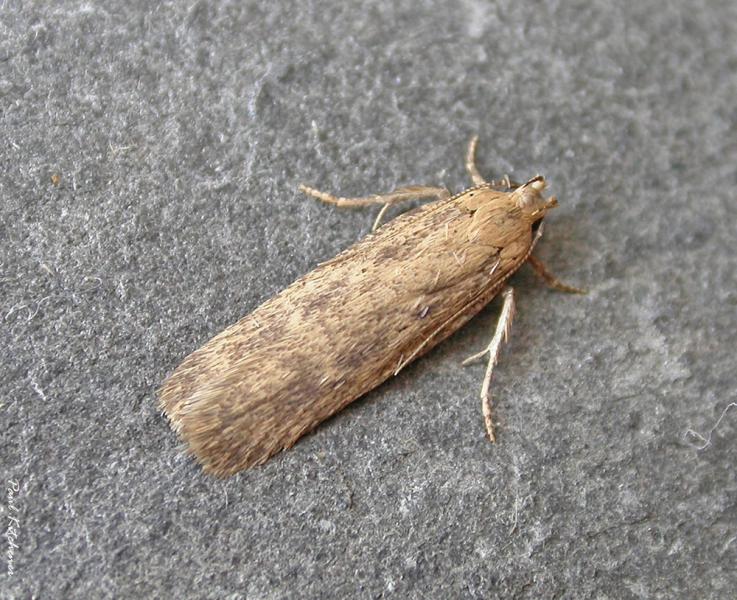
Provisional map
Foodplant and Larval Feeding Signs
Malva sylvestris (common mallow), see plant distribution, Alcea rosea (garden hollyhock) and Lavatera arborea (tree mallow).
In Europe also reported from Parietaria officinalis (a pellitory species), Althaea officinalis (marsh mallow), Urtica (nettle) and Lavatera thuringiaca (garden tree-mallow)
On common mallow the larva seals the sepals down to cover the seeds.
Habitat
Finding the Moth
Larva: seedheads with the sepals sealed down to cover the seeds completely are likely to contain a larva.
Adult: flies at night and comes to light, particularly in the spring and early summer. In the past thatch was reported to be a favoured over-wintering site but the few recent records in the winter period relate to moths indoors or in sheds.
Similar Species
Superficially similar to Pexicopia malvella in size and shape. P. subcinerea has a prominent black spot at the base of the forewing near the dorsum (trailing edge) and a pale-ringed black spot at two thirds, most obvious on fresh specimens. Pexicopia malvella has a generally darker fuscous colouring to the forewing, particularly obvious in the outer third and along the costa (leading edge) and lacks the black spot at the base of the wing. There are some differences in the flight period although overlap can occur in August and early June.
Single brooded with moths having been found in every month of the year. The species usually appears in late July and then hibernates from early September to the beginning of April making a strong reapperance in May and early June.

